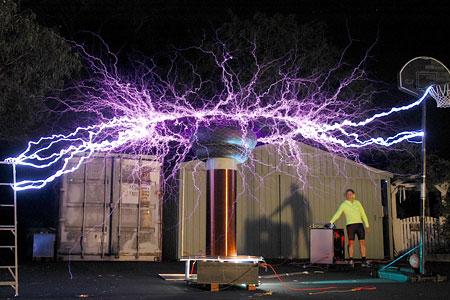Title Page
GEMBA Safety Walk Inspection
-
Site:
- CMC - Hamilton (OH)
- CMC - Greenville (AL)
- Burndy - Littleton (NH)
- Burndy - Lincoln (NH)
- Burndy - Londonderry (NH)
- Burndy - Manchester (NH)
- Killark - Fenton (MO)
- Juarez (MX)
- Toluca (MX)
-
Category Completed:
- Material Handling
- Electrical Safety
- Fire Prevention
- Machine Guarding
- Hoists, Cranes & Auxiliary Equipment
- Permit Required Confined Space Entry
- Powered Industrial Trucks/Forklifts
- Ladder Safety
- Welding, Cutting & Brazing
- Hand Power, Portable Tools & Equipment
- Abrasive Wheel Equipment Grinders
- Compressors & Compressed Air
- Compressed Gas Cylinders
- Elevated Surfaces
- Floor & Wall Openings
- Racking
- Aisles
- Exterior Docks
- Interior Docks
- Spraying Operations
- Identification of Piping Systems
- Hazardous Waste
- Universal Waste
-
Department(s) Inspected (If entire plant cannot be completed):
- Barfield
- CPI
- Machining Centers
- Screw
- Receiving B
- Shipping/Receiving A
- Maintenance/Tool Room
-
Conducted On:
-
Auditor(s):
Inspection Categories (Pick One to Complete)
Material Handling
-
Slings, chains, all lifting equipment serialized and inspected (daily visual, annual third party documented)
-
Cranes/hoists in good condition
-
Are pallets properly stored (i.e. not leaning against columns, protruding into aisleways, etc.)?
-
Are all materials stored above knee level so they do no present a trip hazard?
-
Are vehicles shut off and their brakes set prior to loading or unloading?
-
Are dock boards (bridge plates) used when loading or unloading operations are taking place between vehicles and docks?
-
Are trucks and trailers secured from movement during loading and unloading operations?
-
Are all hand trucks maintained in safe operating condition?
-
Are securing chains, ropes, chokers, or slings adequate for the job to be performed?
-
When hoisting material or equipment, are provisions made to ensure that no one will be passing under the suspended loads?
-
Are stacked material interlaced to prevent sliding or tipping?
-
Are shelves labled for capacity, secured and constructed to withstand the maximum designated storage weight?
Electrical Safety
-
All electrical panels or boxes covered, secured and labeled
-
No open knockouts
-
Clearance around electrical equipment should be 3 feet minimum (around disconnect switches, isolators, switchboards, etc.)
-
GFCI outlets in place at all wet or damp locations (outdoors, 6' from any water source and when using portable tools)
-
Extension cords and plug strips installed correctly (off floor so objects cannont fall into them) and not used more than 90 days, except for computers
-
Electrical cords undamaged (not frayed, ground plug intact)
-
Exit signs are internally illuminated and placed throughout the facility
-
No multitap outlets used for any application, or daisy chaining (plugging into each other) of plug strips and/or extension cords
-
Is all electrical equipment (including flammable storage cabinets from which flammable materials are being dispensed from) grounded?
-
Arc Flash Study done on entire facility with all panels labeled with Arch Flash Rating and PPE required. Must be completed within the last five years
-
Work areas are adequately illuminated
-
Are all flexible cords and cables free of splices and taps?
-
Is use of metal ladders prohibited in areas where the ladder or the person using the ladder could come in contact with energized parts of equipment, fixtures, or circuit conductors?
-
Are disconnecting switches and circuit breakers labeled to indicate their use or equipment served?
-
Is each motor located within sight of its controller or the controller disconnecting means capable of being locked in the open position, or is a separate disconnecting means installed in the circuit within sight of the motor?
-
Are employees who regularly work on or around energized electrical equipment or lines instructed in cardiopulmonary resuscitation (CPR) methods?
Fire Prevention
-
Local fire department acquanted with the facility and its specific hazards
-
The fire suppression equipment inspection is current
-
Are fire alarm systems tested at least annually?
-
Are interior standpipes and valves inspected regularly?
-
Are automatic sprinkler system water control valves, air and water pressure check as required?
-
Are sprinkler heads protected by metal guards if exposed to possible physical damage?
-
Fire extinguishers located every 75', inspected and accessible
-
Are fire extinguishers provided in adequate number & type?
-
Are employees periodically trained in use of fire suppression and protection procedures?
-
Are combustible materials stored in covered metal receptacles and removed from work areas promptly?
-
Are approved containers and tanks used for the storage and handling of flammable and combustible liquids?
-
Are flammable liquids kept in closed containers when not in use?
-
Are bulk drums of flammable liquids grounded and bonded to containers during dispensing?
-
Are “no smoking” signs posted on liquefied petroleum gas tanks and in areas where flammable or combustible materials are used and stored?
-
Are storage tanks adequately vented to prevent the development of excessive vacuum or pressure?
Machine Guarding
-
Point of operation is guarded on all machines
-
Hard guards, light curtains, two hand controls, pressure sensing mats, lasers, halo guards, etc are functional and in good condition
-
Flywheels and power transmission is effectively guarded
-
Guarding gaps set to correct dimensions (go/no go gage)
-
Stop time safety distance verified annually
-
Preuse testing of safety guards (two hand controls, light curtains, etc.) is conducted at the beginning of each shift
-
Emergency Stops within easy reach of machine operator
-
Is sufficient clearance provided around and between machines to allow for safe operations, servicing, material handling, and waste removal?
-
Is equipment and machinery securely placed and anchored when necessary, to prevent tipping or other movement that could result in personal injury?
-
Can electric power to each machine be lockedout for maintenance, repair or security?
-
Are footoperated switches guarded or arranged to prevent accidental actuation by personnel or falling objects?
-
Are manually operated valves and switches controlling the operation of equipment and machines clearly identified and readily accessible?
-
Are all emergency stop buttons brightly colored (red with a yellow background) or placarded?
-
Are all pulleys and belts that are within 7 feet of the floor or working level properly guarded?
-
Are all moving chains and gears properly guarded?
-
Are splash guards mounted on machines that use coolant to prevent the coolant from reaching the employees?
-
Are machinery guards secure and arranged so they do not offer a hazard when in use?
-
If special hand tools are used for placing and removing material, do they protect the operator’s hands?
-
Are revolving drums, barrels, and containers guarded by an enclosure that is interlocked with the drive mechanism, so that revolution cannot occur unless the guard enclosures are in place?
-
Are provisions made to prevent machines from automatically starting when power is restored after a power failure or shutdown?
-
Are machines constructed so as to be free from excessive vibration when the largest sized tool is mounted and run at full speed?
-
Are fan blades protected with a guard having openings no larger than 1/2 inch, when operating within 7 feet of the floor?
-
Are saws used for ripping equipped with antikickback devices and spreaders?
-
Are radial arm saws so arranged that the cutting head will gently return to the back of the table when released?
Hoists, Cranes & Auxiliary Equipment
-
Is each overhead electric hoist equipped with a limit device to stop the hook travel at its highest and lowest point of safe travel?
-
Will each hoist automatically stop and hold any load up to 125 percent of its rated load if its actuating force is removed?
-
Is the rated load of each crane & hoist legibly marked and visible to the operator?
-
Are controls of the hoists plainly marked to indicate the direction of travel or motion?
-
Is each cagecontrolled hoist equipped with an effective warning device?
-
Are closefitting guards or other suitable devices installed on hoists to assure hoist ropes will be maintained in the sheave grooves?
-
Are all hoist chains or ropes of sufficient length to handle the full range of movement of the application while still maintaining two full wraps on the drum at all times?
-
Are nip points or contact points between hoist ropes and sheaves that are permanently located within seven feet of the floor, ground, or working platform guarded?
-
Are measures are taken avoid carrying loads over people?
-
Are hoists and loadbearing structures load tested and annually certified?
-
Are all pelican hooks equipped with springloaded safety clips to prevent accidental load release?
-
Are only employees who have been trained in the proper use of hoists allowed to use them?
-
Are the cranes visually inspected for defective components prior to the beginning of any work shift?
-
Are all electrically operated cranes effectively grounded?
-
Is a crane preventive maintenance program established?
-
Is the load chart clearly visible to the operator?
-
Are operating controls clearly identified?
-
Is an audible warning device mounted on each crane?
-
Is sufficient illumination provided for the operator to perform the work safely?
-
Are cranes of such design, that the boom could fall over backward, equipped with boomstops?
-
Does each crane have a certificate indicating that required testing and examinations have been performed?
-
Are hoist & crane inspection and maintenance records maintained and available for inspection?
Permit Required Confined Space Entry
-
Are all Permit Required Confined Spaces identified and labeled as such?
Powered Industrial Trucks / Forklifts
-
Are only trained personnel allowed to operate industrial trucks?
-
Training on industrial trucks is specific to the type of industrial truck being used and includes classroom training and a hands on demonstration
-
Is substantial overhead protective equipment provided on high lift rider equipment?
-
Are required lift truck operating rules posted and enforced?
-
Do forklifts have functioning alarms, strobes, and horns?
-
Is directional lighting provided on each industrial truck that operates in an area with less than 2 foot candles per square foot of general lighting?
-
Are brakes on each industrial truck capable of bringing the vehicle to a complete and safe stop when fully loaded?
-
Does the industrial truck’s parking brake effectively prevent the vehicle from moving when unattended?
-
Are industrial trucks operating in areas where flammable gases or vapors, combustible dust, or ignitable fibers may be present in the atmosphere, approved for such locations?
-
Are the drive motors shut off and are brakes applied when any motorized hand and hand/rider truck’s control grip is released?
-
Are battery charging/changing areas designated for that purpose and contain appropriate emergency flushing facilities(i.e. eyewash and shower)?
-
Powered industrial truck preuse inspection sheet (performed each shift)
-
Seat belt policy for forklifts
-
Powered industrial trucks have blue light kits installed for forward and reverse directions
-
No work has been done on any powered industrial truck that affects the capacity or safe operation of the powered industrial truck
-
Keys are not left in the ignition of an unattended powered industrial truck
-
Powered industrial truck operators shut of ignition when being approached by a pedestrian
Ladder Safety
-
Are ladders inspected monthly and maintained in good condition?
-
Are nonslip feet provided on each ladder?
-
Are ladder rungs and steps free from grease and oil?
-
Is it prohibited to place ladders on boxes, barrels, or other unstable bases to obtain extra height?
-
Are ladders with broken, missing steps, rungs, or cleats, broken side rails, or faulty equipment removed from service?
-
When in use, do ladders extend at least 3 feet above elevated surface?
-
Are metal ladders legibly marked with signs cautioning against using them around electrical power sources?
-
Are rungs of ladders uniformly spaced at 12 inches, center to center?
-
Are wooden ladders prohibited and taken out of use when found?
Welding, Cutting & Brazing
-
Does each operator have a copy of the appropriate operating instructions and do they follow them?
-
Are compressed gas cylinders regularly examined for expired hydro test dates, obvious signs of defects, deep rusting, and/or leaking?
-
Are precautions taken to prevent mixture of oxygen with flammable gases, except at a burner or in a torch?
-
Are only approved apparatus (torches, regulators, pressurereducing valves, acetylene generators, manifolds) used?
-
Are cylinders kept away from sources of heat?
-
Are cylinders kept away from elevators, stairs, or gangways?
-
Are hot work permits required?
-
Is required welding, cutting and brazing PPE used properly and inspected periodically?
Hand Power, Portable Tools & Equipment
-
Are all tools and equipment maintained in good condition?
-
Are hand tools, such as chisels, punches, etc., which develop mushroomed heads during use, reconditioned or replaced as necessary?
-
Are broken or fractured handles on hammers, axes, and similar equipment replaced promptly?
-
Are worn or bent wrenches replaced regularly?
-
Are appropriate handles used on files and similar tools?
-
Are safety glasses, face shields, etc. used while using hand tools or equipment that might produce flying materials or be subject to breakage?
-
Are jacks checked periodically to ensure they are in good operating condition?
-
Are tool handles wedged tightly in the heads of all tools?
-
Are tool cutting edges kept sharp so the tool will move smoothly without binding or skipping?
-
Are tools stored in dry, secure locations?
-
Are grinders, saws, and similar equipment provided with appropriate safety guards and are they used as recommended by the manufacturer?
-
Are portable electric tools and extension cords inspected regularly with the results documented and the tools marked with a dated “OK” tag?
-
Are portable circular saws equipped with guards above and below the base shoe?
-
Are rotating or moving parts of equipment guarded to prevent physical contact?
-
Are all cordconnected, electricallyoperated tools and equipment effectively grounded or of the approved double insulated type?
-
Are effective guards in place over belts, pulleys, chains, and sprockets?
-
Are portable fans provided with full guards or screens having openings of 1/2 inch or less?
-
Is hoisting equipment available and used for lifting heavy objects, and are hoist ratings and characteristics appropriate for the task?
-
Are pneumatic and hydraulic hoses on poweroperated tools checked regularly for deterioration or damage?
Abrasive Wheel Equipment Grinders
-
Are work rests installed and kept adjusted to within 1/8 inch of the wheel?
-
Is the adjustable tongue on the top side of the grinder used and kept adjusted to within 1/4 inch of the wheel?
-
Do side guards cover the spindle, nut, and flange and 75 percent of the wheel diameter?
-
Are bench and pedestal grinders permanently mounted?
-
Are goggles or face shields always worn when grinding?
-
Is the maximum RPM rating on each abrasive wheel compatible with the RPM rating of the grinder motor?
-
Are fixed or permanently mounted grinders connected to their electrical supply system with metallic conduit or other permanent wiring methods?
-
Does each grinder have an individual on/off control switch?
-
Is each electrically operated grinder effectively grounded?
-
Are dust collectors and powered exhausts provided on grinders used in operations that produce large amounts of dust?
-
Are splash guards mounted on grinders that use coolant to prevent the coolant from reaching employees?
-
Is cleanliness maintained around grinders?
Compressors & Compressed Air
-
OSHA approved nozzles
-
Air pressure =/< 30 p.s.i
-
Hose connection fittings crimp style (no hose clamps, wire ties, etc.)
-
Hose undamaged (no cracks, dry rot, kinks)
-
Are all compressors equipped with pressure relief valves, and pressure gauges?
-
Are compressor air intakes installed and equipped to ensure only clean uncontaminated air enters?
-
Are air filters installed and regularly inspected?
-
Are compressor safety devices checked frequently?
-
Are signs posted warning of the automatic starting feature of the compressors?
-
Are all belt drive systems totally enclosed?
-
Are safety chains or other suitable locking devices used at coupling of highpressure hose lines where a connection failure could create a hazard?
-
When compressed air is used with abrasive blast cleaning equipment, is the opening valve a type that must be held open manually?
-
Is every compressed air receiver equipped with a pressure gauge and one or more automatic, springloaded safety valves?
-
Is every air receiver provided with a drain pipe and a valve at the lowest point for the removal of accumulated oil and water?
-
Are all safety valves tested frequently and at regular intervals to determine whether they are in good operating condition?
-
Are inlets of air receivers and piping systems free of accumulated oil and carbonaceous materials?
Compressed Gas Cylinders
-
Cylinders stored upright and chained with caps firmly in place
-
Flammable gases separated from oxygen
-
Gas cylinders turned off when not in use
-
Motor fuels (propane tanks) turned off when not in use
-
Compressed air guns in good condition w/safety tip
-
The gas cylinder is properly identified (i.e. chemical name and hazard: flammable, corrosive, poison, oxidizer)
-
Are cylinders with water capacity of over 30 pounds equipped with means for connecting a valve protector device, or with a collar or recess to protect the valve?
-
Are compressed gas cylinders stored in areas that are protected from external heat sources?
-
Are cylinders located or stored in areas where they will not be damaged by passing or falling objects or tampered with by unauthorized persons?
-
Are cylinders stored or transported in a manner to prevent them from creating a hazard by slipping, falling, or rolling?
-
Are valve protectors/caps always placed on cylinders when cylinders are not in use or connected for use?
-
Are all valves closed off before a cylinder is moved, when the cylinder is empty, and at the completion of each job?
-
Are low pressure fuel gas cylinders checked periodically for corrosion, general distortion, cracks, or any other defect that might indicate a weakness or render it unfit for service?
-
Are cylinders stored at least 20 feet away from highly combustible materials?
-
Are cylinders maintained with current hydro inspection dates?
-
Are fuel gas and oxygen cylinders stored a minimum of 20 feet apart or separated by a 1hour firewall?
-
Are inservice cylinders adequately supported to prevent them from falling over?
Elevated Surfaces
-
Are standard guardrails provided when the walkway surface is elevated more than 30 inches above any adjacent floor or ground?
-
Are signs posted showing the surface load capacity?
-
Are elevated surfaces that expose people or machinery to falling objects provided with standard 4inch toe boards?
-
Is permanent means of access and egress provided to elevated storage and work surfaces?
-
Is material on elevated surfaces piled, stacked, or racked in a manner to prevent it from tipping, falling, collapsing, rolling, or spreading?
-
Is required headroom provided where necessary?
-
Are at least two means of egress provided from elevated platforms, pits or rooms where the absence of a second exit would increase the risk of injury from hot, poisonous, corrosive, suffocating, flammable, or explosive substances?
Floor & Wall Openings
-
Are floor openings guarded by a cover, guardrail, or equivalent on all sides?
-
Are toe boards installed around edges of permanent floor openings?
-
Are skylight screens capable of supporting at least 200 pounds?
-
Are grates or similar type floor covers designed so that foot traffic or rolling equipment will not be affected by their placement?
-
Are portions of pits not actually in use either covered or protected by guardrails or equivalent?
Racking
-
Racking is secured to floor
-
Replace/Repaired damaged uprights and cross members
-
Pallet storage (i.e., overhang, weight, location, condition) is appropriate
-
Load rating on racks
Aisles
-
Aisles clear of material
-
Aisles defined and identified
-
Is there safe clearance for equipment through all aisles and doorways?
Exterior Docks
-
Are approach roads and staging areas (yard) clear for maneuvering, well drained, free of potholes and are all signs in place and legible?
-
Are dock positions clearly marked with painted lines that the drivers can see to help them spot their trailer accurately?
-
Are all exterior lights working properly?
-
Are wheel chocks and/or trailer restraint systems working properly?
-
Are "attractive nuisances" (anything that might attract children, vandals, etc.) controlled or removed from around the facility?
Interior Docks
-
Are visitors and drivers remaining in designated safe areas and walkways?
-
Are all interior overhead lights and trailer lights in the dock area operating properly?
-
Do dock doors work properly and close completely?
-
Are dock doors closed when not in use?
-
Is there sufficient room to maneuver materials?
-
Are there sufficient waste cans for the area and are those cans properly labeled and emptied on a regular basis?
-
Is there adequate natural or mechanical ventilation to control any potential atmospheric hazards?
Spraying Operations
-
Is mechanical ventilation provided when spraying operations are done within enclosed areas?
-
Are spray areas free of hot surfaces?
-
Is the spray area at least 20 feet from flames, sparks, operating electrical motors, and other ignition sources?
-
Is approved respiratory equipment provided and used during spraying operations?
-
Are fire control sprinkler heads kept clean?
-
Are “NO SMOKING” signs posted in spray areas, paint rooms, paint booths, and paint storage areas?
-
Is the spray area kept clean of combustible residue?
-
Are spray booths constructed of metal, masonry, or other substantial noncombustible material?
-
Are spray booth floors and baffles noncombustible and easily cleaned?
-
Is electric drying equipment properly grounded?
Identification of Piping Systems
-
When hazardous substances are transported through above ground piping, is piping identified at points where confusion could introduce hazards to employees?
-
When pipelines are identified by color painted bands or tapes, are the bands or tapes located at reasonable intervals and at each outlet, valve, or connection?
-
When the contents of pipelines are identified by name or name abbreviation, is the information readily visible on the pipe near each valve or outlet?
-
When tags identify pipelines carrying hazardous substances, are tags constructed of durable materials, clearly and permanently distinguishable, and are tags installed at each valve or outlet?
-
When pipelines are heated by electricity, steam, or other external source, are suitable warning signs or tags placed at unions, valves, or other serviceable parts of the system?
Hazardous Waste
-
Emergency procedures posted and current
-
Adequate PPE provided for cleaning up spilled toxic or hazardous materials
-
Storage area secured
-
Hazardous Waste label applied to drum with start date and all other fields populated
-
All containers closed (bung plugs in, rings on, funnels closed)
-
All liquid drums contained at 110%
-
No leaks, corrosion, dents, spillage
-
Insure area is clean, neat and organized (drums accessible and labels clearly visible)
-
Compatibility (Ensure chemical compatibility) Corrosives, oxidizers, flammables etc.) not stored together
-
Original container labels/markings removed
-
Weekly waste inspections documented
-
Are caution labels and signs used to warn of hazardous substances and biohazards?
-
All areas contain <55 Gallons and stored <1 Year
Universal Waste
-
Maximum one year on site
-
All containers closed and labeled with product name, accumulation start date & quantity











